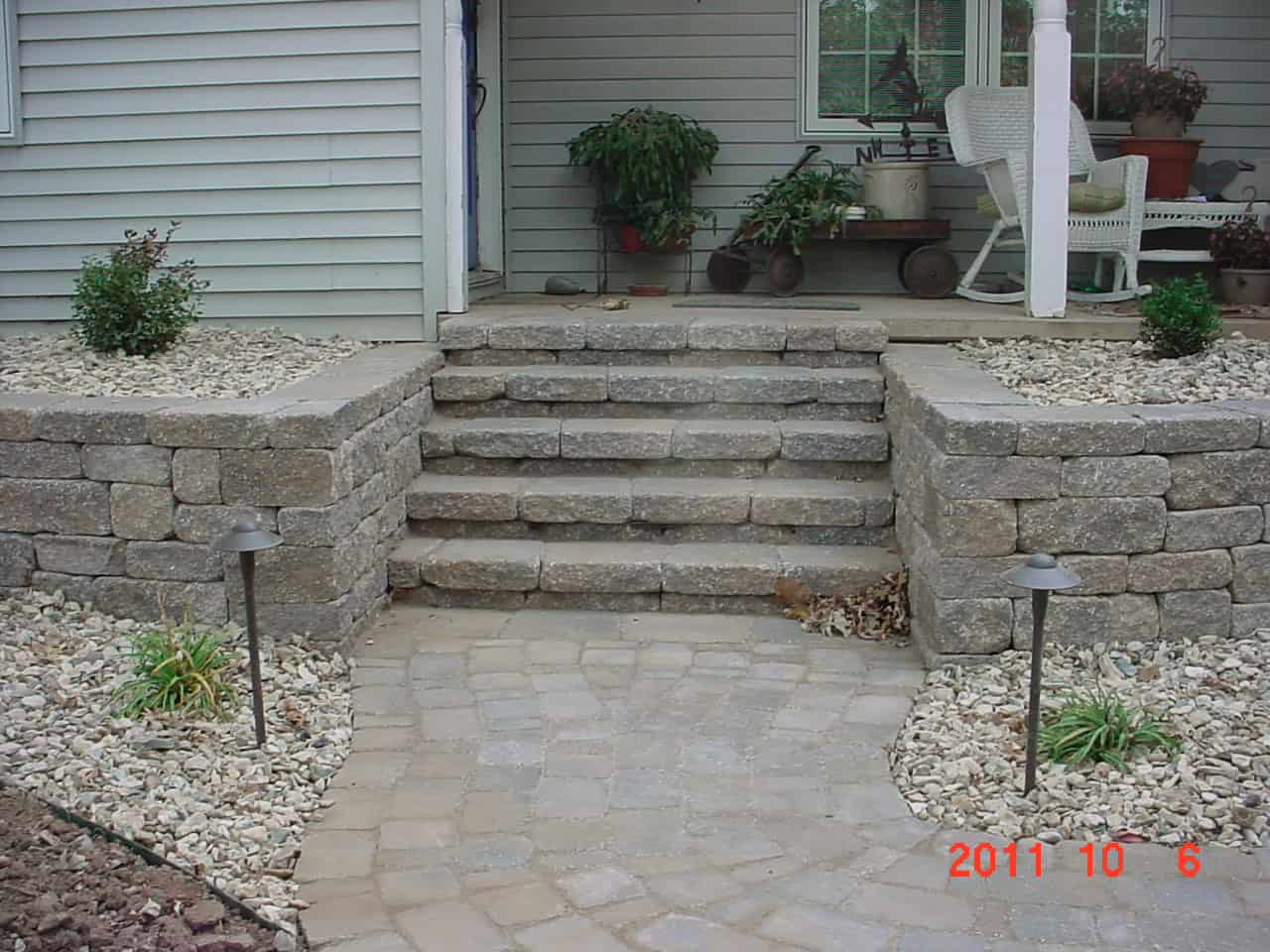Types of Fixtures:
Path

Path lights are one of the most familiar types of lights. Many people have seen the LED or solar powered path lights sold at big box stores. While these will successfully light a walkway so visitors do not trip, they have a lot lacking in terms of beauty. I’ll not bore you with my rant against them, just know that when you purchase higher quality lights, (we use Kichler brand) the LED has been color adjusted to give you a warmer more pleasant glow as opposed to the bright white, almost blueish color in the cheaper LED’s. Once you upgrade to higher quality lights, you will never go back!
As I mentioned earlier, path lights come in a wide variety of shapes and sizes. The ones I like the best have a hood over the top so that the light is forced downward. This keeps the eye from being blinded. I also like to use low wattage so that the path is not the focal point. There are so many more interesting things to use as a focal point.
Wall
Wall lights are just what they sound like. Lights that are mounted on or built into a wall. These are great for lighting patios and decks because the light they give is subtle.
Step

Step lights are very similar to wall lights, only they are mounted under the rungs of the stairs. This again is used for safety and access through the landscape after sunset.
Post
Post lamps can be decorative lights by the front gate of the property or even mounted on the deck or house. These lamps are used for decoration and visibility in high traffic areas.
Spotlights
Spotlights are used in up lighting and down lighting as I will explain next week in Lighting Techniques. With the different wattages, many different effects can be made. These are the lights you would use to light up flagpoles, signs, trees, buildings, arbors, and other focal points.
Under Water
Underwater lights are just what they sound like; lights that can be submersed to light up a pond, waterfall, or swimming pool.
Bulb Types:
Incandescent
Incandescent lights are almost a thing of the past. We rarely use incandescent light fixtures for a number of reasons. First, they output a large amount of heat. When I was working as an intern, I remember working on a landscape at a nursing home. This nursing home had in ground incandescent lights that got hot enough to start a fire and burnt the front portion of the building. If that is not reason enough to steer you away from incandescent lights, the bulbs need replaced much more often and they use more electricity. They are not void of benefits, though – the color of incandescent bulbs was much warmer and pleasing to the eye than LED’s until the last few years. Now, with new technology, LED’s also can be found with a similar warm look. Because of this new technology, incandenscent lights are becoming a thing of the past.
LED
LED lights, as mentioned above, are low wattage and use very little electricity. They also do not get very hot to the touch which make them very safe. Wiring is much simpler because of the low wattage and several more lights can be run on the same wiring system than with incandescent lights. Also, maintenance such as replacing bulbs is much less often. Some LED’s can go for 10-15 years! Be sure to pay the little bit extra to get the warmer lights. For those of you who enjoy the specs, the warmer color is 2700 Kelvin as opposed to the more common 3000+ Kelvin.
Check out the benefits of Landscape Lighting!
Go to Lighting Techniques Blog Post
Return to Grimm’s Lighting Page




Hi, What an impressive post! The way you sum-up this topic briefly, shows your professionalism. I Got the latest collection of outdoor spotlights at the lowest price last week. Spot Lighting enhanced the safety and beauty of my fences and walkways.